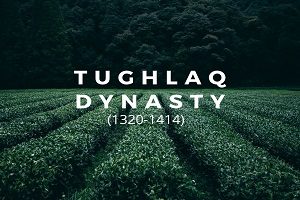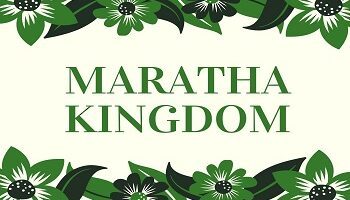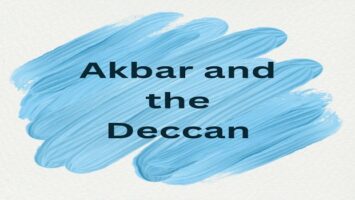Table of Contents
Tughlaq Dynasty Important Facts:
- Tughlaq – personal name.
- Belonged to Qarauna Turk tribe, mixed tribe of Turk & Mongol stock.
Ghiyas-ud-din Tughlaq (1320-25):
- Also called Ghazi Malik.
- First sultan of Delhi who took up the title of Ghazi or Slayer of the infidels.
- First sultan to start irrigation work.
- Gave up land measurement & started Batai System or Sharing of Crop.
- Efficient postal service was restored.
- He sent his son Jauna Khan to re-establish authority in Warangal (Kakaitya) & Madurai (Pandyas).
- Confusion prevailed in Bengal too. After the sultan’s successful march against Bengal, Jauna Khan hastily constructed wooden pavilion at Afghanpur Village for Ghiya’s welcome, collapsed & caused the Sultan’s death.
- Ibn Batuata, moroccon traveller called conspiracy of Jauna Khan.
- Sufi saint Shaikh Nizam-ud-din Aulia said about him ‘Delhi is far away’.
- Built the city of Tughlaqabad near Delhi & made it his capital.
Muhammad-bin-Tughlaq (1325-51):
- Also called Jauna Khan.
- Critics called him master of opposite or Wisest fool or Wonder of creation.
- First sultan who visited the tomb of Muinuddin Chisti at Ajmer.
- First ruler to participate in Holi.
- Built Mausoleum of Nizamuddin Auliya at Delhi.
- Religious discussion with Rajshekar (Hindu yogis) & Jinaprabha suri (Hindu Saints).
- Created department of Agriculture – Diwan-i-kohi.
- Whole of South India independent during his lifetime. Three major Independent states were-
- Empire of Vijaynagar – Harihara & Bukka founded in 1336.
- Bahmani Kingdom- founded by Hasan Gangu (1347).
- Sultanate of Madura – Hasan shah.
- Agriculture Loans (Sondhar) & Takkavi Loans (Loans for cultivation).
- Moving toward Thatta or Thugs in sind, he died in March 1351.
- Ibn-Batuta came to Delhi in 1333 & act qazi for 8 years. He recorded the contemporary Indian scene in his Safranamah (Rahela). Return to Morocco in 1353.
- Experiment of Sultan –
- Muhammad-bin-Tughlaq transferred his capital from Delhi to Devagiri (Daulatabad), which was centrally located & strategically better for political control over his entire kingdom. But his folly lay in the manner he set about to execute his plan. Instead of shifting only his government, he ordered the entire population of Delhi to move to Daulatabad. He provided all sorts of facilities to his subjects. But the people of Delhi were not happy & they looked upon this as an exile. Sultan had to abandon this project on two accounts – First was the rebellion in Mabar in 1334-35, second the spread of bubonic plague around the same time. In long term Daulatabad, became the seat of Islamic Learning.
- 1329 – Token Currency- second controversial project of sultan. It means introduction of bronze tankas in place of silver tankas. Main reason – Global shortage of Silver. Sultan experiment failed on account of circulation of counterfeit coins on a very large scale, which caused chaos in trade & commerce. Barani wrote that ‘house of every Hindu became a Mint’.
- Another visionary plan of Sultan that proved very disastrous was his thought of conquering the world. He planned to conquer Khorasan & Iraq because of the decline of the power of the Mongol Khan. Barani says that 370,000 men were enrolled & paid for one whole year, but the army did not leave for the expedition & was disbanded. Reason – Condition in Iraq had improved.
- Conquest of Qarachil (1333) met with a disastrous end.
- Taxation in Doab. Agricultural reforms to enhance the land revenue to half the produce was inworkable as a famine hit the Doab area & the relief reached too late.
- Built fortress of Adilabad & city of Jahanpanah.
Firuz Tughluq (1351-88):-
- Restored rent free lands (inam, idrar).
- Abolishing 23 taxes & substituted them with only four taxes– Kharaj, Zakat, Jeziah & Khums.
- Kharaj – Land Revenue; Zakat – income tax on the income of Muslim; Khams – War spoil / war booty; Jeziah – Non-Muslim tax.
- He was the first sultan to levy jeziah on the Brahmins too, who had been previously exempted from this tax.
- Irrigation tax at 10% of the produce of land called Haqq-i-sharb.
- He got two canals dug to bring water from Ganga & Yamuna to Hissar, a city founded by him. Akbar repaired later & shah jahan extended it up to Delhi.
- He made iqta system Hereditary.
- He also made civil & military posts hereditary.
- A department of slaves called Diwan-i-Bandagani was set up by him. The slaves (180,000) were trained in various crafts & employed in royal karkhanas.
- Set up a hospital (dar-ul-shafa) in Delhi.
- Cities made – Hissar Firuza, Jaunpur (in the memory of Jauna Khan) & Firuzabad in Delhi.
- To beautify his new capital Firuzabad in Delhi, two Asokan pillars were brought, one from Topara in Ambala & the other from Meerut.
- He roughly built 1200 gardens in & around Delhi.
- He created a separate department called Diwan-i-khairat to help the poor & needy. One of its function to make arrangements for the marriage of the poor Muslim girls at state expense.
- He introduce lower denomination of Coinage – Half Jital (Adh Jital- 1/2 jital); Quarter Jital (Bikh- 1/4 jital).
- His book – Futuhat-i-Firuzshahi.
- Barani, the historian, in his court. He wrote – Tarikh-i-Ferozshahi & Fatwa-i-Jahandri.
- His last years were marked by troubles & mental infirmity & hence the power went to the arrogant Prime Minister, Khan-i-Jahan Jauna Khan.
- Among the Tughlaqs (1388-1414), Nasir-ud-din Mahmud was the last ruler, who faced the onslaught of Timur, the great Mongol leader of Central Asia (1398). After this fatal blow the Delhi Sultanate disintegrated in to provincial kingdoms & two of the important ones to follow were Sayyids & Lodis.









Comments (No)